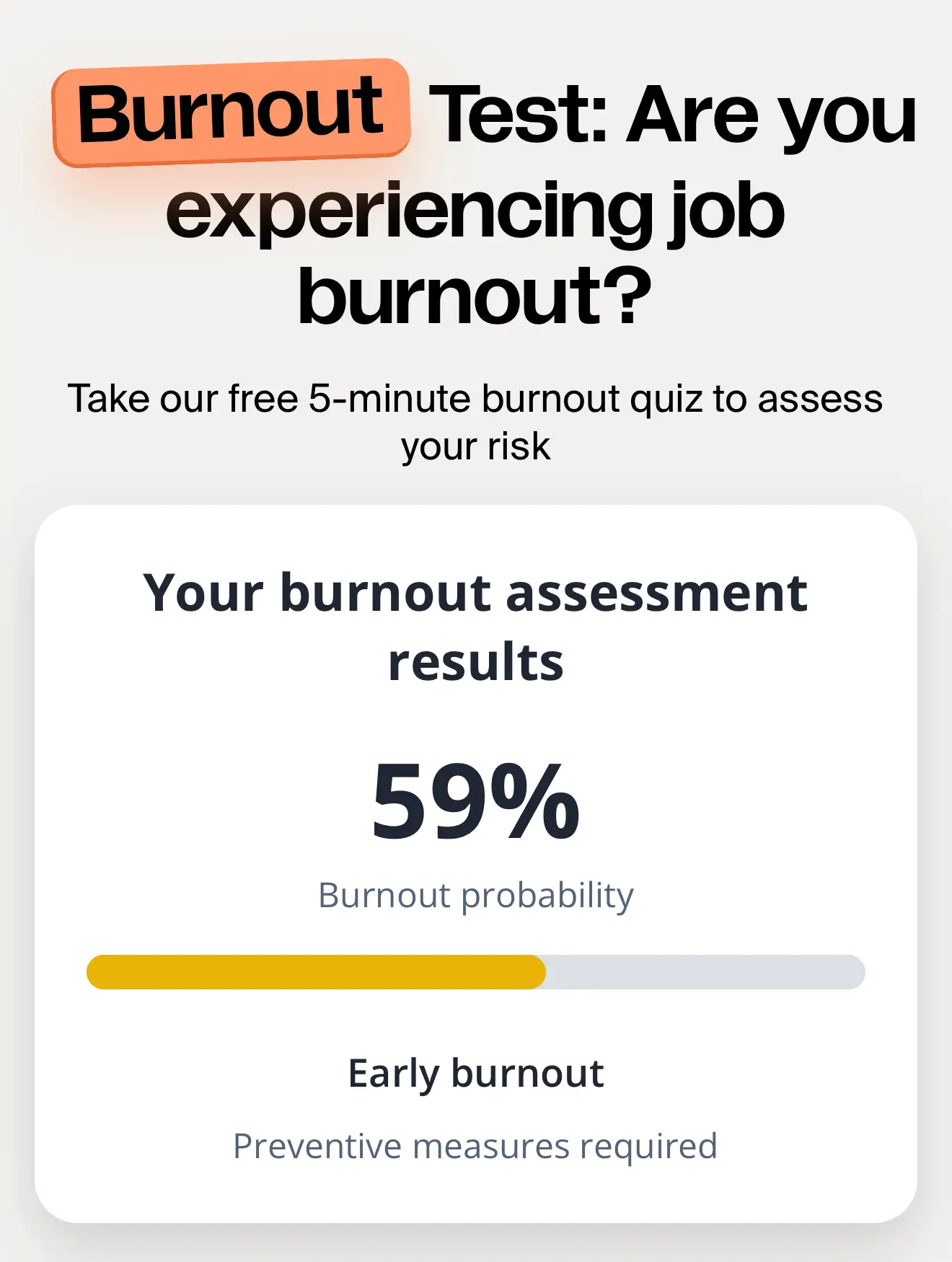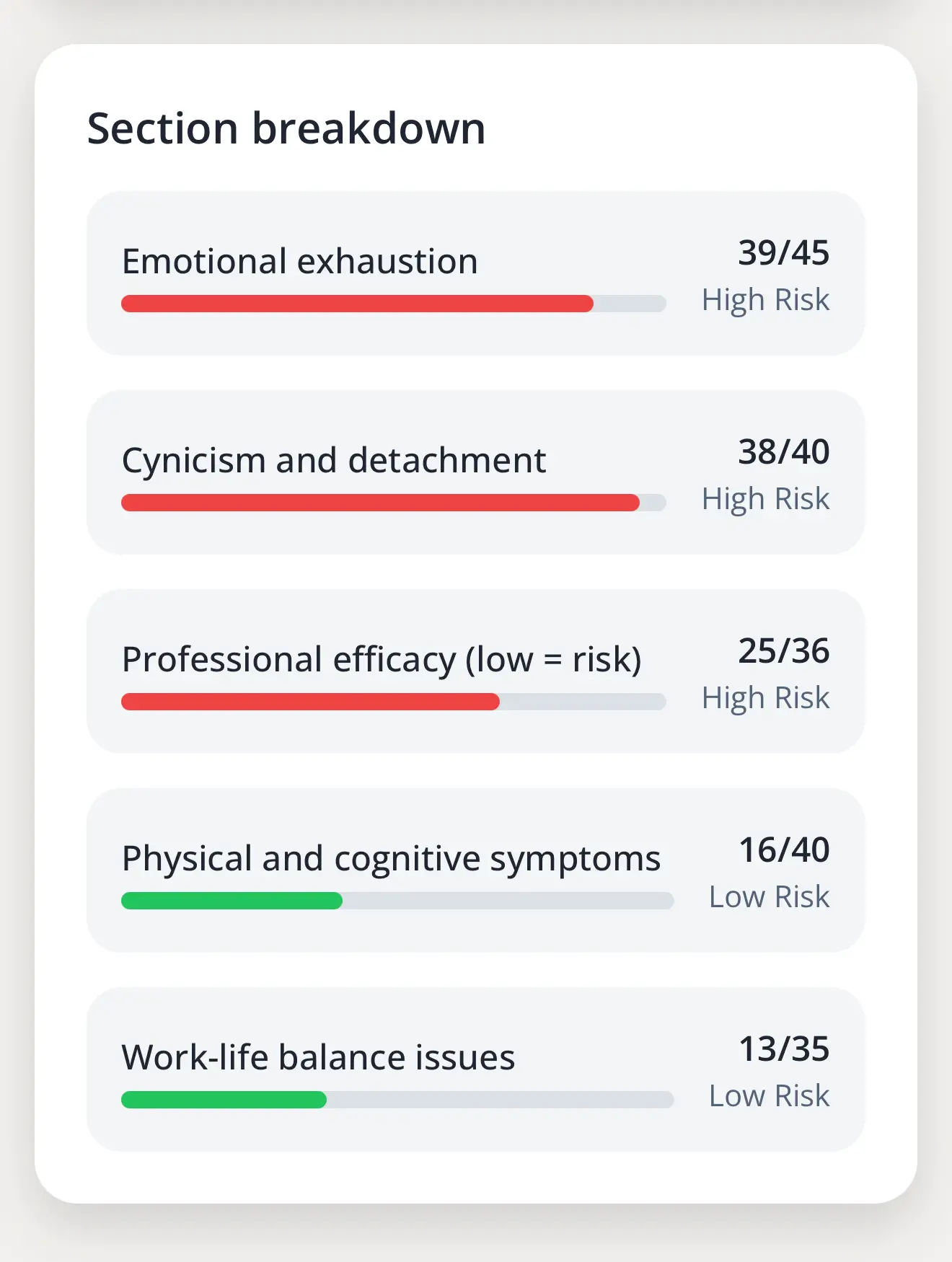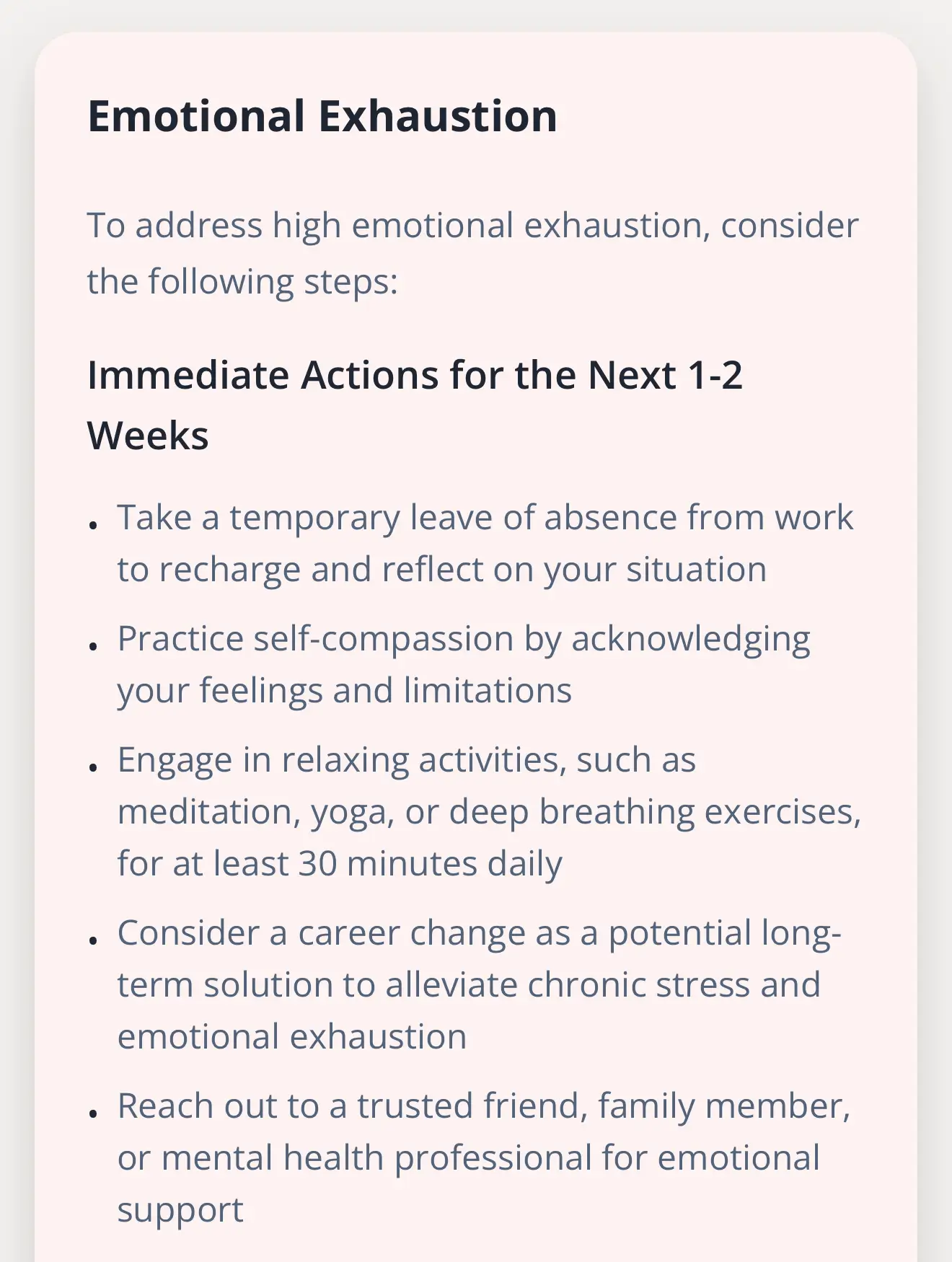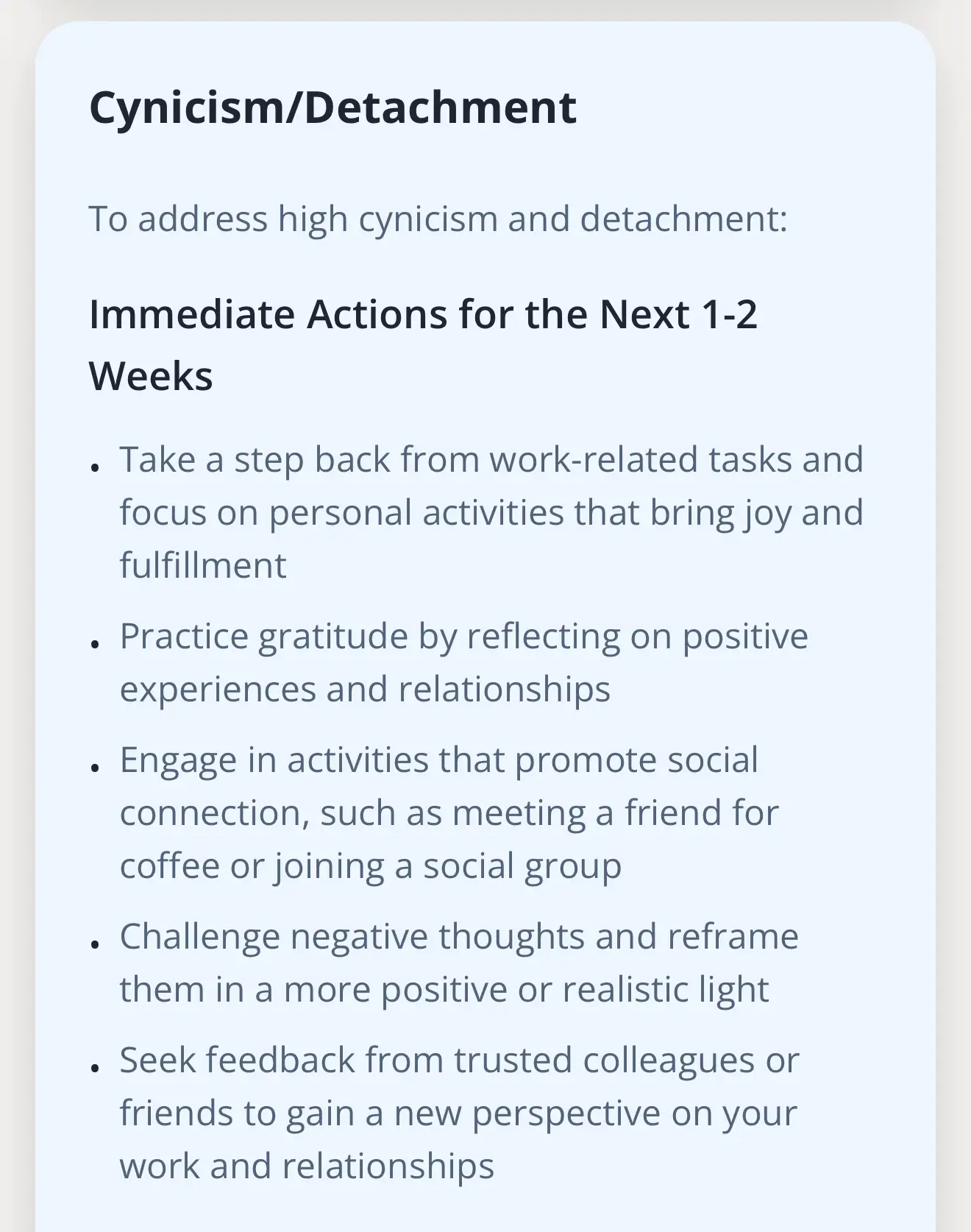Test
What causes career burnout and why it happens to you
Career burnout doesn't just show up one day—it builds up from workplace stress that's been ignored for months, sometimes years. The biggest reason? You're drowning in work without enough time, resources, or help to actually get it done. You're constantly playing catch-up and feeling overwhelmed. Things get worse when you have zero control over your own work, your boss keeps changing expectations without telling you, or the office culture is just plain toxic. These all speed up your descent into complete emotional exhaustion.
But it's not just about having too much work. Burnout happens when there's a basic disconnect between you and your job. Maybe the company's values don't match yours. Maybe nobody notices or appreciates what you do. Maybe you can't separate work from life anymore, or your manager and coworkers just aren't backing you up. Jobs where you're constantly dealing with other people's emotions—think healthcare, teaching, customer service—have higher burnout rates because you're giving all the time but getting nothing back.
Your personality matters too. If you're a perfectionist, struggle to hand off tasks, always try to please everyone, or can't turn down requests, you're creating extra pressure on top of what work already throws at you. High achievers especially tend to ignore the warning signs until they completely fall apart. If you're balancing too many things, dealing with anxiety at work, or just miserable despite trying to fix things, those are major red flags that your situation isn't sustainable and you're hurting yourself.
Burnout recovery stages
Recognition and acceptance stage
Step one is admitting that you're actually burned out—not just tired, not being dramatic, but genuinely burned out. This means identifying what you're going through, accepting your current path isn't working, and letting yourself focus on getting better without feeling guilty about it. Lots of people fight this stage and keep grinding until they completely break down. Recognition is about validating what's happening to you, understanding burnout is a real work-related condition, and deciding to make changes instead of pretending everything's fine.
Crisis management phase
After you've admitted there's a problem, you need to stabilize things fast. This phase is all about stopping the damage: sleep more, take time off work if you can, cut back on commitments anywhere possible, and talk to a therapist or doctor. You're not fixing the deeper issues yet—you're just trying to stop things from getting worse. Set some emergency boundaries, cancel stuff that isn't critical, ask your family and friends for support, and start taking care of yourself in basic ways. Right now you're aiming for stability, not a full recovery.
Rebuilding and prevention
Once things have stabilized, the last stage is figuring out what caused your burnout and building habits that actually stick. You need to identify whether it was too much work, a terrible environment, weak boundaries, or feeling like your values didn't align—then actually change something. Some people negotiate a lighter workload or move to a different role. Others realize they need to completely switch careers. Recovery means setting real boundaries, surrounding yourself with supportive people, learning how to handle stress better, and changing your lifestyle so this doesn't happen again. True recovery isn't going back to how things were—it's creating something different and sustainable.
Why take a burnout test?
Get your results in 3 simple steps
Our burnout assessment tool uses the same validated dimensions as the professional Maslach Burnout Inventory, combined with cutting-edge AI to deliver actionable insights in minutes.
Ready to understand your burnout risk?
Join thousands who've taken control of their mental health and career satisfaction. This free burnout test online takes just 5 minutes and provides immediate, personalized results to help you move forward.
What you'll discover in your results




FAQ
Do I have burnout or am I just stressed?
Here's the real difference: stress feels like you're drowning under everything you need to do, but burnout feels like being hollowed out, emotionally wiped, and totally disconnected from your job. If a weekend off or even a vacation doesn't bring back your energy or excitement, you're probably dealing with burnout instead of regular work anxiety or short-term stress. Our burnout questionnaire can help you figure out which one you're facing by looking at specific things like cynicism, feeling disconnected from people, and how effective you feel at your job, along with your stress levels.
Am I burnt out or depressed - how can I tell the difference?
Someone with job burnout might still have fun with their hobbies, enjoy spending time with family, or actually relax on vacation, while someone dealing with clinical depression can't find joy in much of anything. Burnout also gets better when you change your environment—finding a new role, drawing better boundaries, or taking serious time away from whatever's triggering it.
Depression sticks around even when your circumstances get better and usually needs professional help. But here's the catch: if you ignore burnout long enough, it can turn into depression, which is why catching it early with something like this burnout self-assessment actually matters. If what you're going through affects your whole life and doesn't change based on your work situation, you should really talk to a mental health professional.
What are the burnout warning signs?
In terms of behavior, you might pull away from your coworkers, put things off more than usual, or start using food, alcohol, or other things to deal with how you're feeling.
If you're dealing with three or more of these consistently for a few weeks, especially if they're messing with how you do your job or affecting your personal relationships, it's time to take a burnout symptoms test and really look at what's going on.
Can students experience burnout too?
Student burnout shows up as constant tiredness, trouble focusing on your coursework, putting assignments off, watching your grades drop even though you're trying, losing interest in subjects you used to love, and feeling buried under educational demands. Things that drive student burnout include pressure to perform well, competitive environments, professors who don't clearly explain what they want, having no say in what you're studying, and not having enough support.
Some educational platforms like TripleTen actually get this risk and design their career development programs with reasonable pacing, mental health resources, community support, and workload expectations that won't destroy you. If you're a student dealing with these symptoms, this burnout self-test can help you figure out how at risk you are and pinpoint what needs attention—maybe it's how you manage time, setting boundaries, or getting help from academic support services.
How long does burnout recovery take?
Moderate burnout, where you're persistently emotionally exhausted and starting to have real physical symptoms, typically needs 3-6 months of steady work. This isn't just about resting—you have to actually change what caused the burnout, whether that's spreading out your workload differently, getting better work-life balance, or dealing with a toxic workplace.
Severe burnout that's left you mentally exhausted, affected your physical health, and maybe triggered depression or anxiety can take 6 months to over a year. You'll probably need extended time off and professional mental health help.
The real factor isn't just waiting it out—it's actively fixing the root problems. A vacation might help temporarily, but if you go back to the same unsustainable mess, burnout's coming right back. Our AI-powered recovery plan gives you recommendations in phases: immediate steps for the first week or two to get stable, short-term strategies for 1-3 months to tackle underlying patterns, and long-term prevention techniques for 3-6 months to build real resilience and get your career motivation back.
Is this burnout test as accurate as seeing a professional?
But here's the thing: this is a screening tool, not a clinical diagnosis. Burnout isn't officially a medical diagnosis in the DSM-5, though the World Health Organization does classify it as an "occupational phenomenon" in the ICD-11. What that means for you is that while our assessment gives you valuable insights and personalized recommendations, it's not a substitute for professional evaluation if you're dealing with severe symptoms, thoughts of suicide, or symptoms that are seriously messing with your daily life.
What jobs are highly affected by burnout?
Healthcare workers top the list—doctors, nurses, paramedics, and other medical professionals face brutal hours, life-or-death decisions, emotional intensity, and often inadequate staffing. The pandemic made this exponentially worse, and many healthcare systems still haven't recovered.
Teachers and educators are another high-risk group. They're dealing with large class sizes, limited resources, increasing administrative demands, and the emotional labor of supporting students while often feeling undervalued and underpaid. Social workers and mental health professionals face similar challenges—constant exposure to trauma, heavy caseloads, and the weight of helping people in crisis with limited resources.
Customer service roles across industries carry high burnout risk because you're absorbing other people's frustration all day with little control over the situation. This includes call center workers, retail employees, and hospitality staff. First responders—police officers, firefighters, EMTs—deal with traumatic situations regularly, irregular schedules, and high-stress environments.
Caregivers, whether professional or family members caring for aging parents or sick relatives, experience burnout from the constant physical and emotional demands with minimal breaks. Corporate jobs aren't immune either. Lawyers face crushing billable hour requirements and adversarial environments. Tech workers, especially at startups, often deal with unrealistic deadlines, constant pressure to innovate, and "always-on" work cultures.